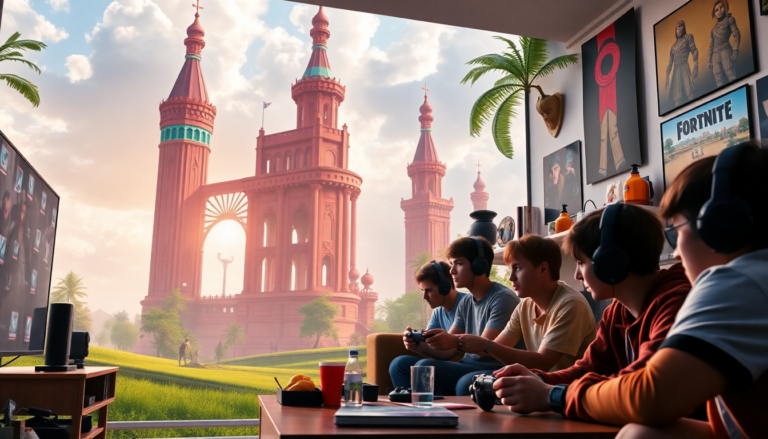Argomenti trattati
Since its launch in 2017, Fortnite Battle Royale has evolved from a simple gaming experience into a true cultural phenomenon. Developed by Epic Games, it initially started as a companion to Fortnite: Save the World, a cooperative survival game. Yet, it quickly found its own identity, skyrocketing in popularity and officially becoming a standalone title by June 29, 2020. Its free-to-play model, supported by microtransactions, has drawn in millions of players across the globe, engaging them on consoles, PCs, and mobile devices alike. But what makes Fortnite so compelling? The answer lies in how it constantly adapts, mirroring both the dynamics of the gaming industry and broader cultural shifts.
Gameplay Mechanics and Innovations
At its core, Fortnite embraces the battle royale genre, where 100 players skydive onto an island, scrambling to gather weapons and resources to be the last one standing. Players can dive in solo or team up in squads, but what truly sets Fortnite apart is its unique construction mechanics. This innovative feature allows players to build defensive structures, gaining strategic advantages during intense encounters. Have you ever tried crafting a quick fort under pressure? It’s a game-changer!
The game’s seasonal structure plays a crucial role in keeping the experience fresh and exciting. With battle passes and limited-time events, Fortnite continually introduces new cosmetic content. Over the years, it has expanded its gameplay with modes like Fortnite Reload, offering a tighter experience for 40 players, and it has even incorporated elements from various media franchises, broadening its appeal to a diverse audience.
Cultural Impact and Community Engagement
So, what fuels Fortnite’s massive success? A big part comes from its vibrant community and cultural relevance. With over 350 million registered players, its social media presence and collaborations with celebrities like Ninja and Marshmello have propelled Fortnite into the spotlight. These partnerships aren’t just for show; they showcase Fortnite’s ability to attract both viewers and players, creating a buzz that resonates beyond the gaming world.
Fortnite’s influence stretches far beyond gaming itself. The game has hosted virtual concerts and promotional events that attract millions of viewers. By integrating popular culture—think characters from franchises like Marvel—it solidifies its status as a cultural touchstone. And let’s not forget about the evolving narrative elements that keep players coming back. Each season unfolds a new storyline, fostering a sense of community as players gather to experience the adventure together. Isn’t that what gaming is all about?
Challenges and Future Directions
However, Fortnite is not without its challenges. It has faced legal disputes over copyright issues related to dance emotes and allegations regarding addictive gameplay mechanics. These challenges highlight the complexities of navigating the modern gaming landscape. Nevertheless, Epic Games has taken proactive steps to address these concerns while pushing the envelope on innovation.
As we look to the future, Fortnite seems committed to staying relevant in an ever-evolving industry. With the integration of cutting-edge technologies like Unreal Engine 5 and a focus on community-driven content, the game is poised to adapt to future gaming trends. As Fortnite continues to build on its solid foundation, it remains a key player in shaping the future of interactive entertainment. What exciting developments lie ahead? Only time will tell!

